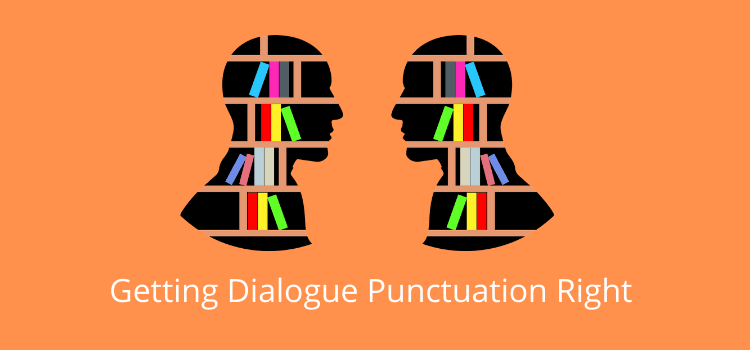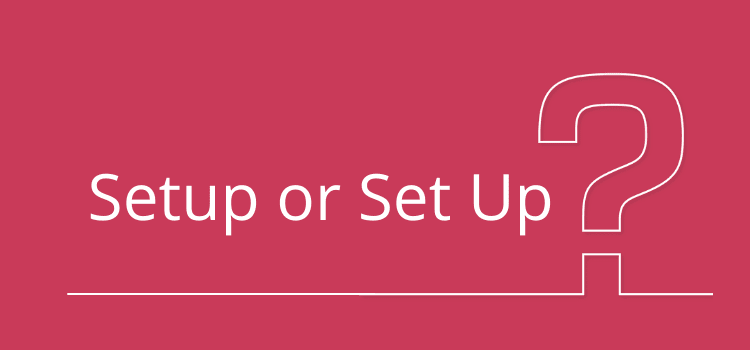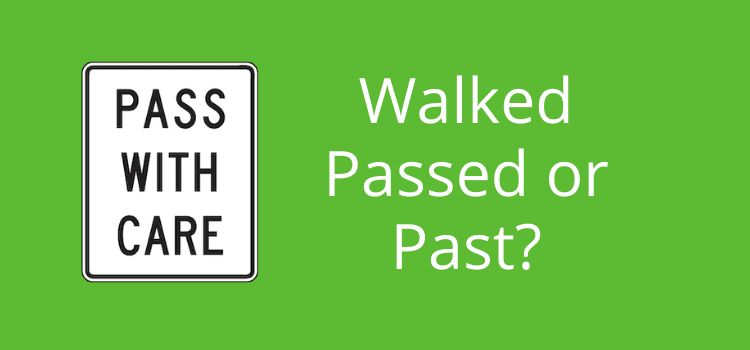
There is one basic rule for dialogue punctuation.
“Keep your punctuation inside the quotation marks!”
There are a few more technical dialogue punctuation rules.
But when you develop the habit of enclosing your punctuation, you will be right 95% of the time.
How to punctuate dialogue
Poor punctuation can confuse and irritate your readers.
However, it is easy to get it right as long as you get into the habit of remembering a few simple rules.
It doesn’t matter if you choose to use single or double quotation marks.
The same rules apply when you are writing dialogue.
They are relatively straightforward and regular when a dialogue tag follows the utterance.

It’s only when a dialogue tag comes before a statement that there is a slight change in punctuation.
7 Rules for dialogue punctuation
The following punctuation rules are generally accepted.
But there can be slight variations if you strictly follow a style guide like the Chicago Manual of Style or APA Style.
1. Use a comma when the dialogue tag follows the quote
When your character finishes speaking, add a comma inside the closing quotation mark.
Even though the line of dialogue is the end of a sentence, you don’t use a period (or full stop).
“I don’t think I can make it on Saturday night,” she replied.
“Mark says the wildest things at times,” he said.
However, when there is no dialogue tag following, you use a period.
“Yes, I agree that there is no way to convince him.”
2. All additional punctuation marks inside quotes
When you use a question mark or exclamation point, it is inside the last quotation mark. The same applies to em-dashes and ellipses.
“What time are the guests supposed to arrive?” Ted asked
“You can’t be serious!” Jim exclaimed.
“I don’t know, but well–” she started to say.
” We could leave on Wednesday, or perhaps…” he muttered.
3. Capitalize on new sentences
When a character uses more than one sentence, always start a new sentence with a capital letter.
“He said he was coming. But you know how unreliable he can be,” Janet said.
4. Start a new paragraph for a new speaker
Dialogue is very confusing without using a paragraph break between speakers.
“Do you know where Carl is living?” Mary asked. “Yes, in Berlin.” Incorrect
“Do you know where Carl is living?” Mary asked.
“Yes, in Berlin.”
5. Use a comma when a tag is before the dialogue
It is the only rule that places punctuation outside the dialogue.
When you start with a dialogue tag, such as he said or she said, follow it with an introductory comma.
He said, “All I need is time, and I will resolve the problem.”
She asked, “What’s the point of doing all this studying?”
6. Multiple paragraphs of dialogue
When a character speaks for more than 20 or thirty words, you will often need to use paragraphs.
The general rule is that the first paragraph does not close with a quotation mark, and subsequent paragraphs have only an opening quotation mark.
The past paragraph then takes the closing quotation mark.
“It was way back in the sixties that I developed a passion for music. Before then, I didn’t really have any interest at all. But a friend of mine bought a new guitar.
“When he showed it to me, I held it, and I just loved the way it felt. It’s hard to explain, but I knew there was something about how my arms wrapped around it, and how it seemed to be a part of me.
“Yeah, I’m sure it sounds silly, but that’s how I began my love affair with music and especially guitars.”
Note that you may find that some style guides recommend only using an opening quotation mark for the first paragraph.
7. Quotations within a dialogue
It’s not often that you need to include a quote. But if you do, you need to enclose the quotation in single quotation marks and capitalize the first letter.
“My dad always says, ‘The harder you work, the luckier you get,’ and I think he’s right.”
An alternative is to use reported speech in your dialogue. It is a little less cumbersome than using single quotes.
Summary
It’s not difficult at all to get your dialogue punctuation right all the time.
Yes, there are some finer points.
But the most important is to remember that, in general, you need to keep question marks, exclamation marks, and periods and commas inside the quotation marks.
If you get into the habit, you will rarely go wrong.
Related reading: How To Check Dialogue Writing Consistency In Your Manuscript




Now why didn’t they make it this easy in High School English? The way they described back then made it sound like they were invoking a little quantum mechanics, some voodoo, wishful thinking, and whole lot of smoke jsut to put a period in a sentance.
I think we had the same English teacher, William. Made it sound awfully difficult back then, when all we needed to know was to stick everything inside the quotes.